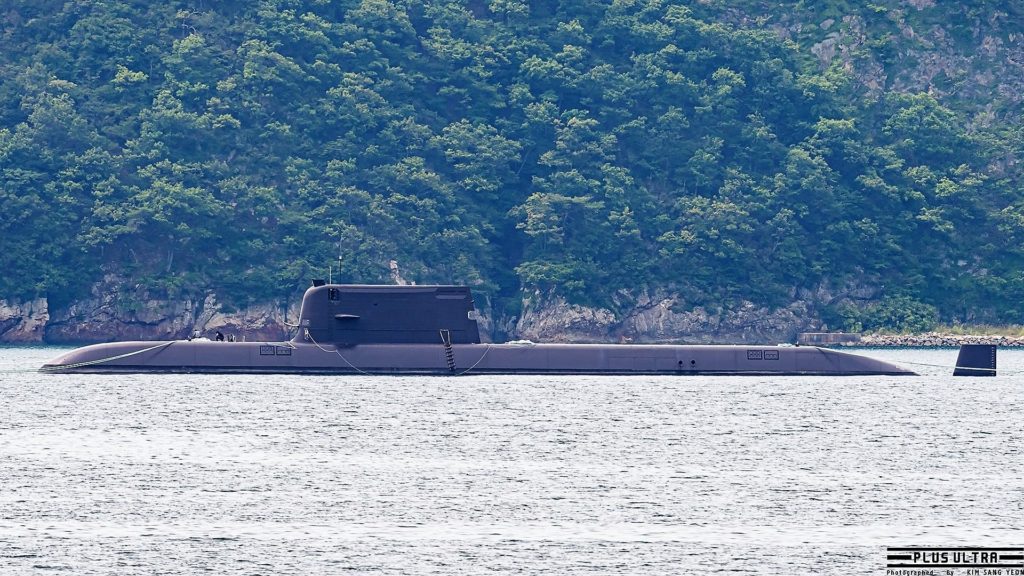The submarine started its seat trials from DSME Opko shipyard on June 10, 2019. It is the first vessel of the KSS-III Batch I program for the Republic of Korea Navy (RoK Navy).
According to ROK Navy submariner federation, the maximum dive depth was used to test equipment and to check that no leaks occurred.
As per tradition, a bottle of wine was placed outside the submarine. With the pressure, sea water enters the bottle via the cork’s pores, making so-called “submarine wine”. At the maximum depth, the crew drinks it one by one. The KSS III maximum depth is obviously a highly classified information and was not disclosed.

With the KSS III program, South Korea has entered the elite club of the few countries able to independently design and build submarines, especially large ones (over 3,000 tons).
For the record, DSME received a contract from the South Korean Ministry of Defense worth $ 1.56 billion to build two large conventional/diesel electric (SSK) KSS III Batch 1 submarines on December 26, 2012. Then, on November 30, 2016, Hyundai Heavy Industries received a contract to build another boat of the first batch. Delivery of all three boats is scheduled for the end of 2023. In total, the plan is to introduce into the RoK Navy fleet nine KSS III submarines by 2029: including three ships of the second and third series each.
- Batch-I consists in the first two hulls to be built by DSME and the third submarine to be built by HHI.
- Batch-II will consist in three hulls with some design changes. They will be fitted with a greater level of South Korean technology. In May 2016, DAPA selected DSME for “KSS-III Batch-II Design and construction of the first hull”.
- Batch-III will consists in the three remaining hulls with more advanced technologies
However, the program of construction of the KSS-III submarines underwent repeated delays for technical and financial reasons, which is to be expected for such major programs.






